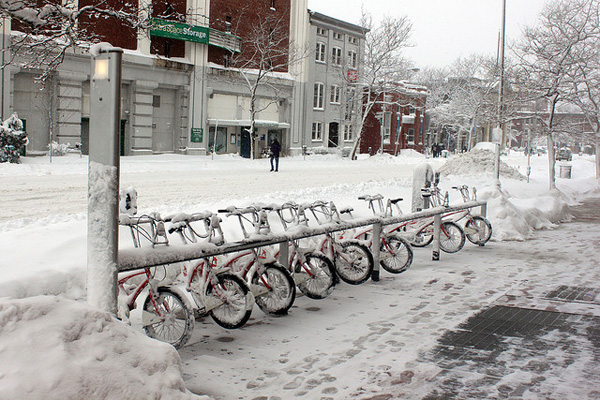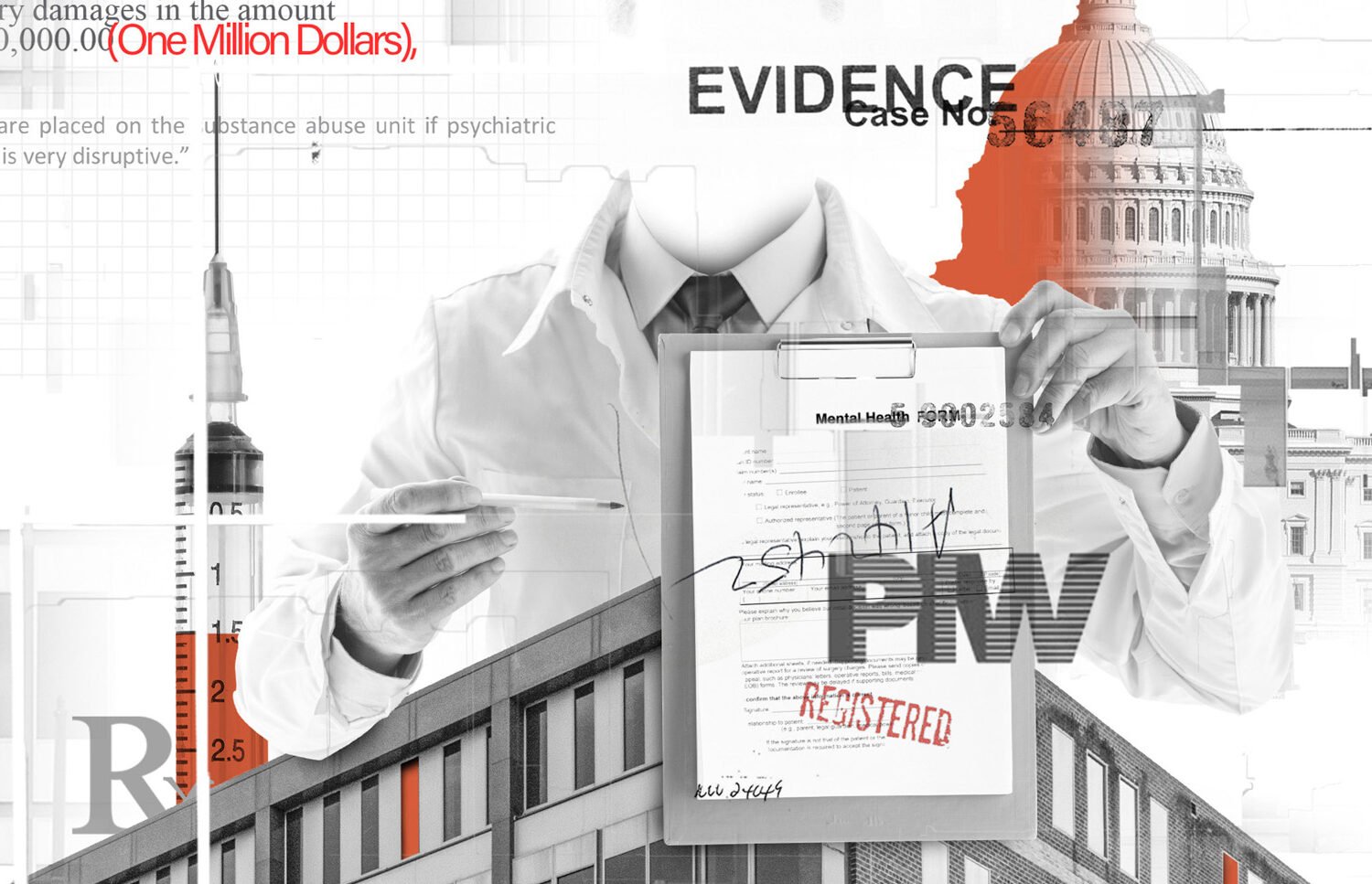Photograph by Andrew Bossi
Daniel Hoagland started braving Boston winters on his bike, armed with some repurposed ski gear—and a bit of nervousness.
“I didn’t have the right equipment for it,” he says. “Some of it worked, some of it didn’t.”
Hoagland has since moved to a (slightly) warmer climate and is now the Washington Area Bicyclist Association’s bicycle ambassador. Some 5,700 people biked to work in the district daily in 2010—about 3.3 percent of all workers—meaning snowpocalypses, ice storms, and unpredictable drivers don’t keep the most dedicated from biking to work. Capital Bikeshare saw near-record ridership in February 2010, and more than 900 riders entered the system’s Winter Weather Warrior contest.
“A lot of bike-share programs actually shut down over the winter, but our ridership grew,” says John Lisle, a spokesman for Capital Bikeshare.
The organization hasn’t yet announced its winter plans, but, like last year, a portion of the bikes will likely be taken out of commission, according to Jim Sebastian, the DC Department of Transportation bicycle coordinator. “It’s because of lesser demand rather than a need to tune them up,” he says.
If you want to continue two-wheeling to work, you’ll want to switch up some of your riding habits and prep your bike for the winter. I spoke with Hoagland and with Dan Enriquez, pit boss at Revolution Cycles in Georgetown, about precautions you can take to make your ride safer and more comfortable.
Dress in layers
You’ll want to be a little cold when you first get outside, Hoagland says, because “you’ll warm up significantly on your ride. It’s just like going hiking or skiing.”
Wear a base layer that wicks sweat away from your skin, such as wool: Enriquez recommends Gore products—especially the jackets, which are comfortable enough to wear as a base layer. “Everyone who works in the shop has one,” he says. Most important, don’t forget your gloves.
Prep your bike
If you have a road bike, you might have to leave it at home or get thicker tires for icy days. “You’ll see people out there on road bikes, but you wouldn’t find me out on one,” Enriquez says.
Before the winter really gets going, seal off or lubricate any exposed steel cables and chains—they’ll rust quickly in winter conditions. Some bike techs might tell you to let a little air out of your tires to give you better traction, but this can backfire.
Enriquez says it’s best to buy new tires or ride with them fully inflated. If you hit a pothole with underinflated tires, you can easily pop the tube or bend the wheel. Bike shops around the city sell studded tires that offer better traction, but they’re pretty pricey and will only be useful during the worst storms.
For a cheap, effective option, attach zip ties around the outside of your tire. The plastic will dig into ice and snow and help keep you on the road.
Remember extra batteries for your bike lights, as they die quickly in cold weather. As the days get shorter, you’ll find yourself using your lights pretty often.
Adjust to road conditions
The state of roads can become unpredictable in the winter, especially after plowing. Bike lanes often disappear or are loaded down with salt and other grime, and after heavy snows, lanes might be further reduced. “You’re riding farther out in traffic, which can create a lot of anxiety,” Hoagland says. “It takes a lot of paying attention and being willing to mingle with cars, which can be daunting.”
And drivers can be unpredictable in icy conditions. “There was one evening last year that I felt I had to get off the road because drivers couldn’t be trusted,” Hoagland recalls.
His advice: When in doubt, stay off your bike. “If you’re at all nervous, err on the side of caution. It’s not worth putting yourself in danger just to prove a point.”
You can take your bike on the Metro after 7 PM and on weekends, and most Metrobuses have bike racks. Once you’ve made it through the worst winter has to offer, tune up your bike. It’ll suffer from a lot of wear and tear throughout the winter, and lingering salt and chemicals can decrease the life of many of its parts.
For some more tips, check out Hoagland’s December 2010 posts on winter riding.


















